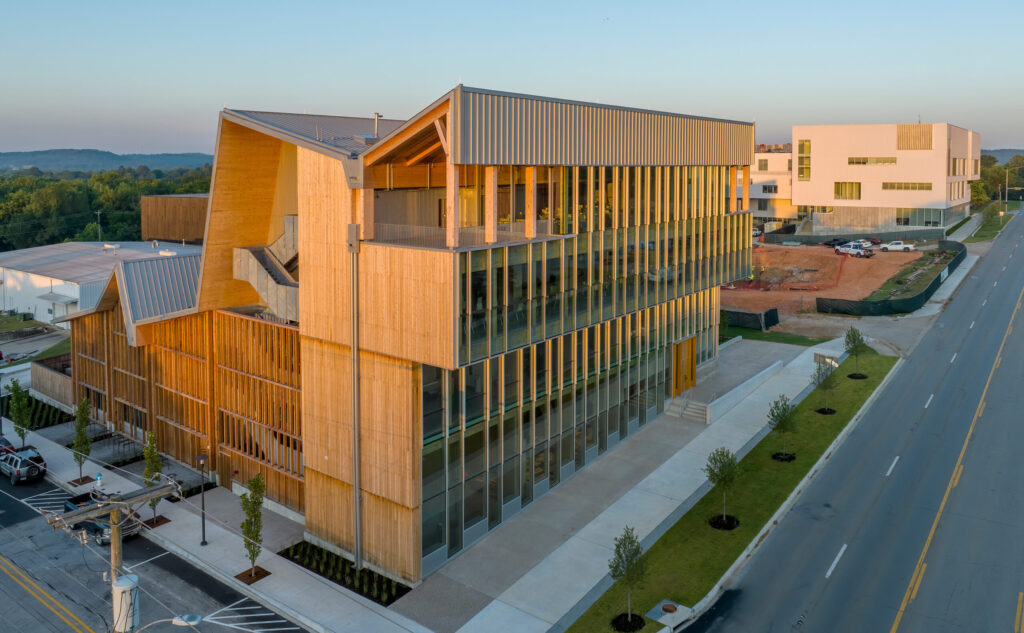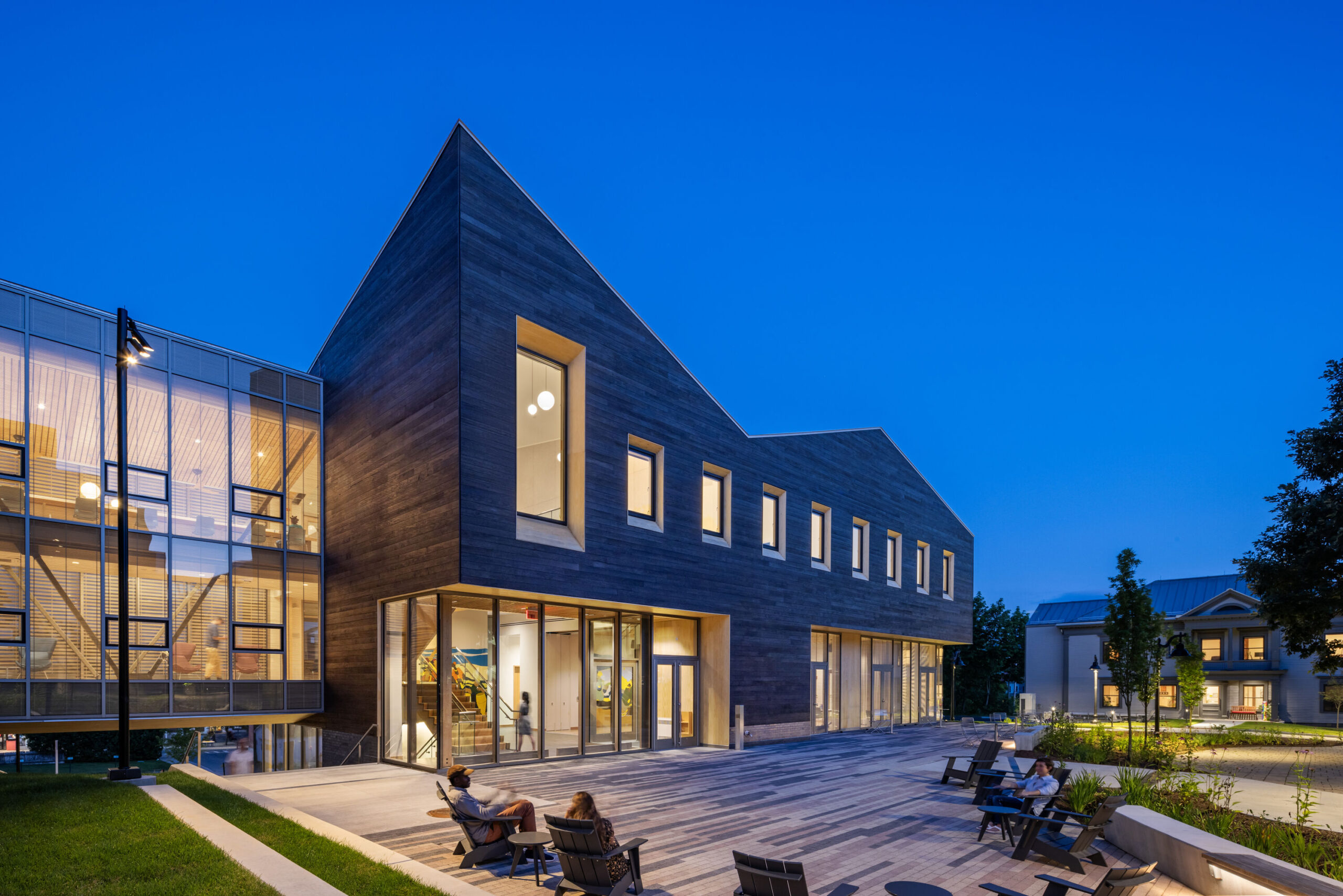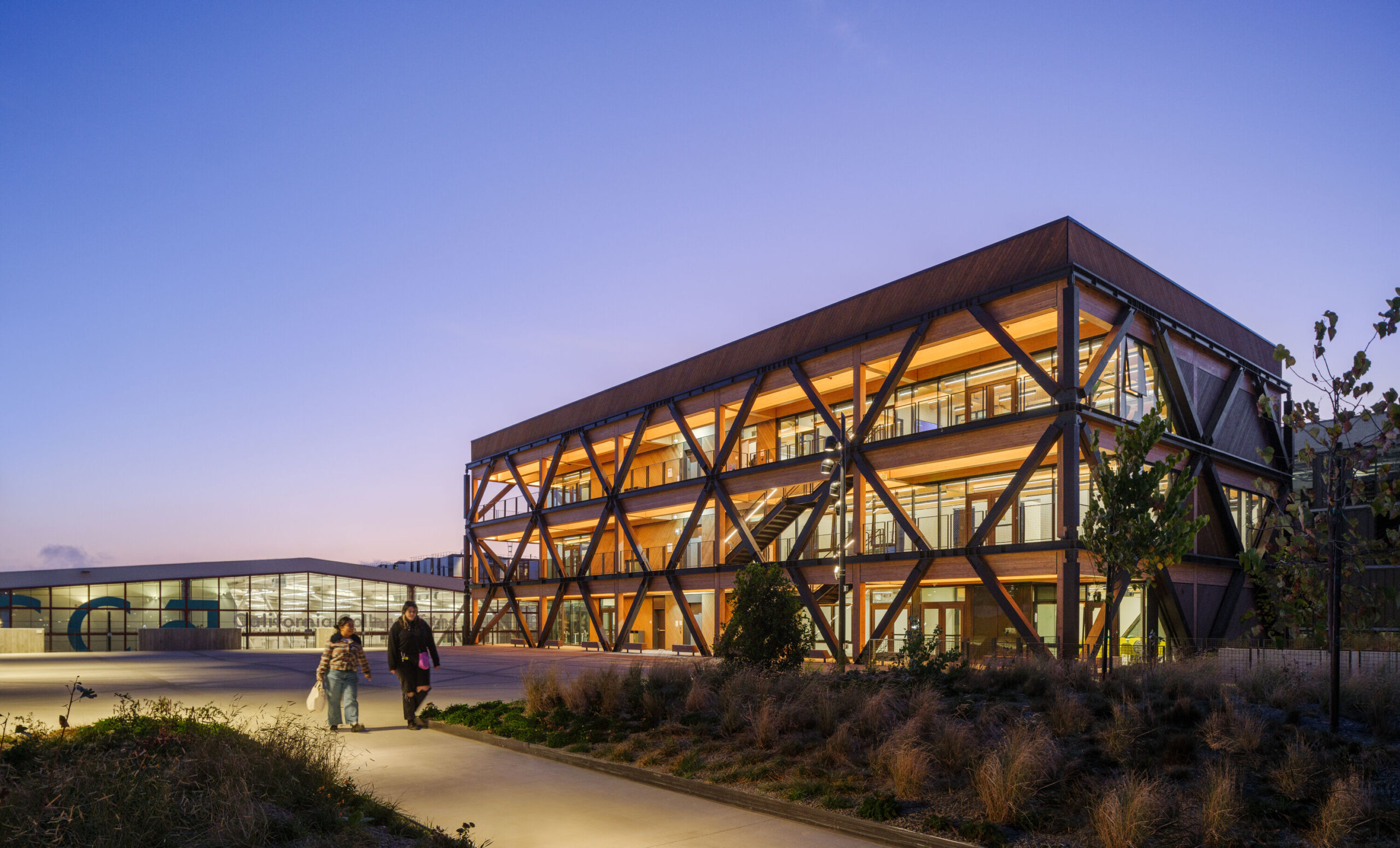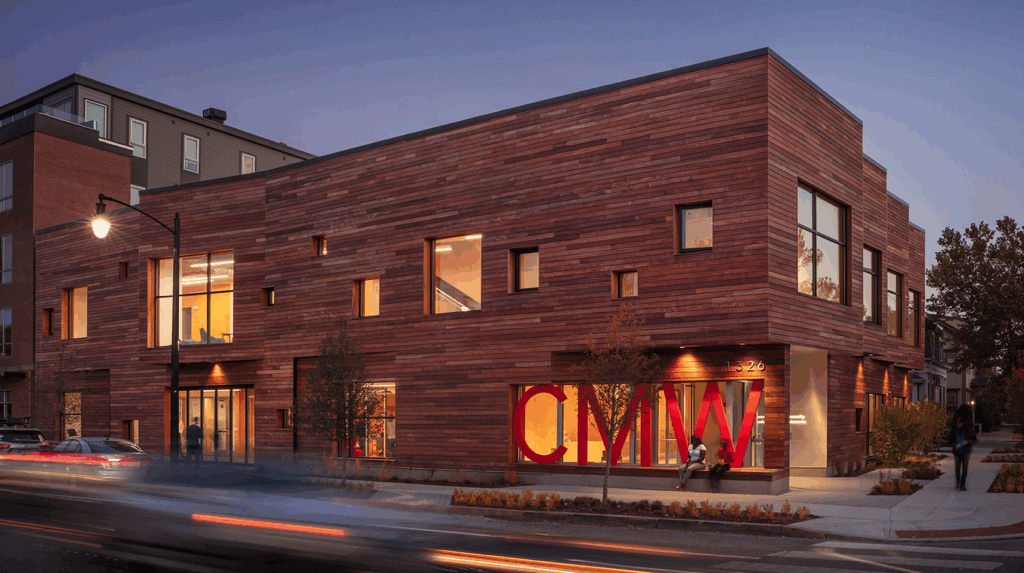Education
New Mass Timber Student Housing Demonstrates a Commitment to Sustainability
Rice, an elite private university in Houston, owes its very existence to wood. Its architecturally significant Ralph Adams Cram–designed early construction was funded by the sale of timber from a 47,000-acre tract in Louisiana. The newest addition to campus, the 166-bed, 53,000-square-foot Hanszen Residential College designed by Berlin-based Barkow Leibinger, extends that legacy with a distinctive contemporary mass timber structure.
Hanszen Residential College

Hanszen Residential College
The project was aided with funding from the USDA Forest Service’s Mass Timber University Grant Program, a partnership with the U.S. Endowment for Forestry and Communities to showcase the architectural and commercial viability of mass timber. (The Forest Service also supplied grant funding for Rice’s Johnson Owl Deck, a mass timber pavilion designed with students as part of a seminar taught by Associate Professor Jesús Vassallo in 2023.)
Partners Frank Barkow and Regine Leibinger characterize their firm as a “material practice” that is constantly experimenting with different systems and techniques. “In recent years we have seen a shift favoring mass timber or hybrid (timber/steel or timber/concrete) in the United States, Germany, and Switzerland,” Barkow says. The firm won the commission because of the partners’ extensive experience with mass timber construction in Europe, and Rice was explicit when hiring Barkow Leibinger for the project: “We want to build the first mass timber building on our campus,” then-Architecture Dean Sarah Whiting told the architects. “Universities want to showcase their commitment to sustainability in a physical and visible way,” Barkow says. “[Mass Timber] is an emerging industry in the United States with a long tradition.”

Hanszen Residential College

Hanszen Residential College

Hanszen Residential College

Hanszen Residential College
The heart of Rice’s campus is defined by some remarkably inventive masonry construction designed by Cram in what is generally referred to as a Mediterranean Revival style. But more than any one building, it’s the campus’s tight-knit outdoor spaces that are sacrosanct. “Rice is urbanistically made up of a series of quads,” Barkow says.
The wooded quadrangle that makes up Hanszen College is anchored on its north side is anchored by the Old Section, a three-story 1920’s structure that features the hallmark quirky brickwork of the University’s early buildings. On its south side sits the new residential college, with a four-story façade designed to mimic the scale of the Old Section—on the back side, the height extends to five stories to accommodate more rooms. On the west side of the quad is the commons building designed by Machado/Silvetti in 2002 and shared with Wiess College; it features gathering spaces that negated the need for anything more than dormitory rooms within the new building.

Hanszen Residential College

Hanszen Residential College
In the new building, double-loaded corridors run east-west, lined by student dormitories on either side. “Mass timber works for this building typology, which is cellular with fairly short spans,” Barkow says. “It lends itself well for things like dormitories or residential architecture.” The structure uses prefabricated timber post-and-beam construction behind a masonry envelope. The building’s strict orthogonal grid of columns and flat ceiling planes is punctuated by arches on both its north and south façades that indicate entry and a pass-through that allows students to move freely between adjacent college quads. Rectilinear windows are set in larger openings finished with tile set into stucco walls on the upper floors to complement the brick in the lower façade. All three cladding materials riff on Rice’s traditional cladding materials, and dual-shed roofs nod to the hipped roof of the Old Section while lending the new building a more contemporary aesthetic.

Hanszen Residential College
Inside, “the ambition was to expose as much timber as we could,” Barkow says. While the Southern Yellow Pine CLT floors received a concrete topping coat, the timber decks are exposed in the ceilings of the floor below. Columns and beams are typically exposed as well. “With a relatively low-rise building, we could expose quite a bit of the timber,” he says.
With a substantial track record of mass timber projects in Europe, Barkow hopes to do more in the United States. “It would be interesting to do more mass timber buildings in the States as the industry evolves,” he says. His hope is that these future projects will continue to explore ways to leverage mass timber’s low carbon to further lower buildings’ environmental impact.. “It would be interesting to combine some of the strategies for net zero that we did at Harvard [the net zero Harvard ArtLab, completed 2019] into building types like this one.”

Hanszen Residential College

Project Details
- Project Name:
- Rice University Hanszen Residential College
- Location:
- Houston, TX
- Type:
- Architect:
- Architect of Record:
- Structural Engineer:
- Structural Engineer of Record:
- Timber Products:







